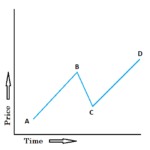To assure fast execution, and achieve the best possible order fills, we host dedicated servers at a datacenter near the stock-market Exchange. Obtaining the shortest possible RTT, or Round Trip Time is crucial in today’s markets which are dominated by High Frequency trading systems.
Our automatic trading systems are based on pattern recognition algorithms. Markets are dynamic, whether they are in a quick accumulation, distribution or in a consolidation phase, our algos automatically adapt to the current environment. Based on the detected pattern the algo is trading, specific Risk/Reward ratios, and pre-determined exits are calculated at entry and during the time the algo is in a trade.
As a requirement our algos need to achieve the following performance measurements at a minimum;
Profit Factor of 1.5 or better.
Sharpe Ratio of 5 or better
Algos are coded in an industry standard programming language; C# (C sharp).
By researching the markets for many years we have found patterns that repeat themselves consistently, across different assets, and different timeframes.
Below is an example of typical pattern formations our algos are trading.
The basic element of our pattern detection is a so called AB=CD pattern. See picture.
When a market is in an uptrend, marked by A to B, it usually experiences a short pullback BC, before it continues its uptrend from C to D. Depending on some other conditions based on criteria such as Volume and depth of the BC pullback as compared to the AB leg, the algo will engage in a long trade at the start of the C to D leg. A clear Risk/Reward ratio can be calculated at this point, since the algo will predict the length of the CD leg and place a stop loss at the low of point C. Through our extensive backtesting we know what the optimal ratios are for AB versus the BC pullback and the expected target D, in order to qualify a high probability trade. Conversely the algo will place a “short” trade when it detects the reverse of this pattern in a down trending market.
This is a very simplistic depiction of the root of the pattern detection engine. It detects a variety of patterns, and combination of patterns, which all have this AB=CD pattern in common, and it uses a variety of proprietary methods to increase probability.

